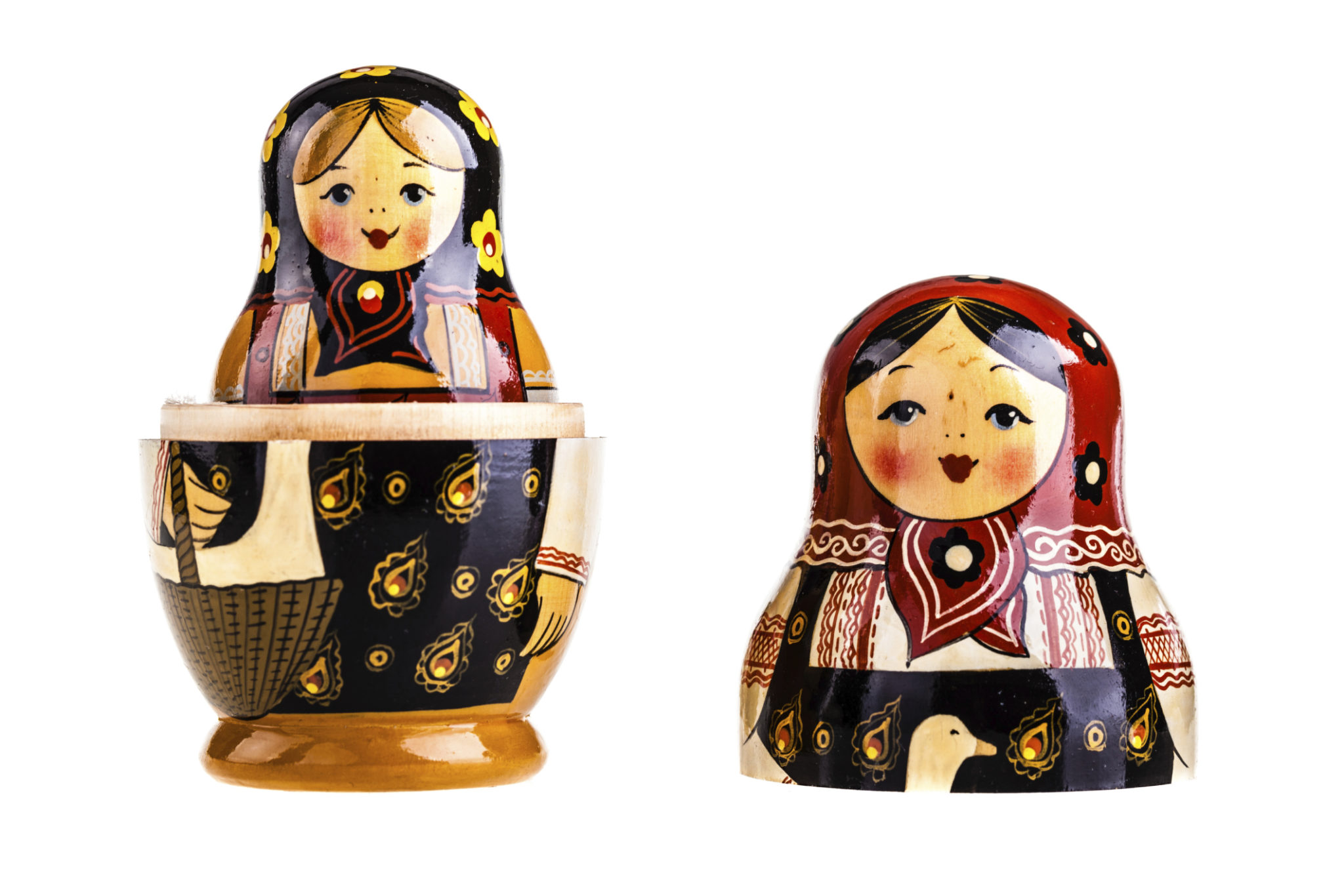And you shall make a kapporet of pure gold… and two golden keruvim(“cherubs”)… at the two ends of the kapporet….
And you shall place the kapporet above, upon the ark; and into the ark you shall put the Testimony which I shall give you.
And I will meet with you there; I will speak with you all that I will command you regarding the Children of Israel from above the kapporet, from between the two keruvim which are upon the Ark of Testimony….
Exodus 25:17-22
In the wake of the divine revelation at Sinai, G-d commanded that a Sanctuary be built to serve as a “tent of meeting”—a point of permanent contact between Him and His people. At the heart of the Sanctuary, in its innermost chamber, stood the ark that housed the “Testimony”—the two stone tablets on which the Ten Commandments were inscribed by the hand of G-d. The ark (in the form of a box and open at the top) was covered by the kapporet—a slab of solid gold, out of which rose the two winged keruvim, hammered out of the same piece of gold. When G-d spoke to Moses, Moses would hear the divine voice issuing from between the two keruvim.
The Testament housed by the ark was the essence of the divine communication to man, for the Ten Commandments encapsulate the entire Torah. Later, the ark also held the Torah scroll written by Moses, which embodies a more detailed rendition of the laws implicit in the Ten Commandments. So the ark was the container of the Torah, the vessel of the divine wisdom and will. Yet the divine voice did not emanate from the ark, but from a space “above the kapporet, between the two keruvim.” What was the significance of the kapporet? What were the keruvim and what do they represent? And why do they mark the point of contact between G-d and man?
Two Commentaries
Foremost among the commentaries compiled by our sages on the Torah are those by Rashi (Rabbi Shlomo Yitzchaki, 1040-1105) and Nachmanides (Rabbi Moshe ben Nachman, 1194-1270). Rashi defines his goal by stating: “I come only to explain the simple meaning of the verse”[1]; indeed, Rashi’s commentary has been universally accepted as the most basic tool for understanding the Torah and serves as a first reference for schoolchild and scholar alike. On the other hand, Nachmanides, a noted mystic and kabbalist, often uncovers a “deeper” stratum of significance in the Torah’s words, exposing its students to “delightful things, for those who know and understand the hidden wisdom [of the Torah].”[2]
Rashi and Nachmanides often differ in their interpretation of a particular word or verse. One example of this is their different conceptions of the kapporet and the keruvim.
Rashi sees the ark and the kapporet as two different objects. The Sanctuary contained various “vessels,” each with a designated function (e.g., the menorah, the altars); according to Rashi the ark and thekapporet are two different vessels—it is only that the designated place of the kapporet is atop the ark.[3]
Nachmanides, on the other hand, sees the kapporet as the cover of the ark (indeed, the word kapporet means “cover”)—as a component of the ark itself, rather than another of the Sanctuary’s vessels.[4]
Another difference between the interpretations of Rashi and Nachmanides concerns the form of the keruvim. According to Rashi, these were two winged figures, each with the face of a child (a boy and a girl).[5]Nachmanides is of the opinion that they were a representation of the celestial figures seen by the prophet Ezekiel in his vision of the divine “chariot.”[6]
Angel or Child?
“There are seventy faces to the Torah,”[7] say our sages, for the divine truth reverberates on every level of reality and in every dimension of the mind. The differences between Rashi’s and Nachmanides’ visions of the kapporet and the keruvim reflect the different faces of Torah that their respective commentaries expound.
Speaking from the perspective of “those who know and understand the hidden wisdom,” Nachmanides sees the Torah as the essence of the bond between G-d and His people. In the words of the Zohar,
“There are three knots[8] that are bound with each other: G-d, the Torah, and Israel…. The people of Israel are bound with the Torah, and the Torah is bound with G-d.”[9]
G-d invested His wisdom in the Torah and His will in its commandments; the Jew studies Torah and implements its commandments in his daily life; thus the Jew is bound with G-d.
According to Nachmanides, the divine presence in the “tent of meeting” radiated from the ark, the vessel of the Torah. The divine voice emerged “above the kapporet, between the two keruvim,” all of which were components of the ark. The keruvim were in the form of the celestial beings described in Ezekiel’s vision, which contains the most profound insights into the nature of the divine perceived by man. For the stuff of the relationship between man and G-d is divine revelation: the revelation of His wisdom and will via the Torah, which attains its loftiest and most intense form in the mystic “hidden wisdom” represented by the keruvim.
Rashi, on the other hand, elucidates the “simple meaning of the verse.” Often, this is mistakenly perceived as the most literal and superficial stratum of meaning of the Torah. But simple is not superficial. On the contrary, the simple meaning of the verse is its most profound meaning, its most elementary significance. It is the root from which all other meanings and levels of understanding derive. It is the essence of the verse, of which the others are but particular facets and expressions.
Rashi’s conception of the ark and kapporet reflects the truth that our relationship with G-d through the Torah is but the realization of a deeper, intrinsic bond that already exists between us; that the kapporet is not part of the ark, but something else, something higher. That ultimately, the divine presence in the “tent of meeting” derives not from the Torah, but from the child-faced keruvim that hover above it.
“For Israel is a youth, and I love him,”[10] proclaims the prophet. On the deepest, most basic level, G-d loves the Jew not for his wisdom or piety, but for his childishness. He loves us because, as the Baal Shem Tov[11] put it, “the simplicity of the simple Jew is of a piece with the simple essence of G-d.” He loves us because we are the extension of His quintessential self, as a child is the extension of the quintessential self of his father.[12]
Based on the Rebbe’s talks on Shabbat Terumah 5741 (February 7, 1981) and on other occasions[13]
Adapted from the teachings of the Lubavitcher Rebbe by Yanki Tauber
[1]. Rashi on Genesis 3:8; ibid., v. 24; et al.
[2]. Nachmanides’ introduction to his commentary on the Book of Genesis.
[3]. Cf. Tzafnat Pa’ane’ach on Exodus 25:17 (based on the Talmud, Sukkah 5a, and Torat Kohanim 1:11): “It was not simply a cover (of the ark) but an entity of its own; it is only that it must be placed upon the ark.”
[4]. Thus, the very same verse implies different things to the two commentators. In Exodus 25:16, after instructing Moses on the design of the ark proper—before telling him how to make the kapporet—G-d commands: “You shall place the Testimony in the ark.” Then, in verse 21, after the kapporet is described, we again read: “And into the ark you shall put the Testimony which I shall give you.” Why does the Torah repeat itself? According to Rashi, the repetition comes to emphasize that the tablets are to be placed in the ark before it is covered by the kapporet. “Place it in the ark,” the Torah is saying—in the ark as it stands alone, before the kapporet is placed upon it. According to Nachmanides, the repetition comes to make the very opposite point: that the Testament should be placed in the ark after it has been covered by the kapporet.
In other words, Rashi and Nachmanides both understand the verse’s repetition as serving to emphasize that the tablets should be placed in theark. But what exactly is the ark? According to Rashi, the kapporet is not part of the ark proper, but another, different component of the Sanctuary (though obviously related to the ark, as evidenced by the fact that it is to be placed atop the ark). So the verse is telling us that the tablets should be placed in the ark as it is unto itself, without the addition of the kapporet. Nachmanides, on the other hand, considers the kapporet to be an integral part of the ark; so the verse comes to tell us to place the tablets in the complete ark, not in an ark lacking its cover.
In addition to the question of when to place the tablets in the ark, there are a number of other halachic issues that relate to the question of whether the kapporet is part of the ark or a “vessel” on its own. See Tzafnat Pa’ane’ach on Exodus 37:6; Likkutei Sichot, vol. XXVI, p. 176.
[5]. Rashi, Exodus 25:18.
[6]. Nachmanides’ commentary on v. 21; see Ezekiel 10.
[7]. Otiyot d’Rabbi Akiva. Cf. Talmud, Sanhedrin 34a; Midrash Rabbah, Bamidbar 14:12; Zohar, part I, 47b; et al.
[8]. Kishrin, in the Aramaic. So reads the version of this Zoharic passage that is quoted in the teachings of Chassidism (the standard version reads “There are three levels…). See note 12 below.
[9]. Zohar, part III, 73a.
[10]. Hosea 11:1; see Baal HaTurim on Exodus 25:18.
[11]. Rabbi Israel Baal Shem Tov (1698-1760), founder of Chassidism.
[12]. See Tanna D’vei Eliyahu Rabbah, chapter 14: “Two things preceded G-d’s creation of the world: Torah and Israel. Still, I do not know which preceded which. But when Torah states ‘Speak to the Children of Israel…,’ ‘Command the Children of Israel…,’ etc., I know that Israel preceded all.”
This concept is also alluded to in the Zoharic passage cited above, which speaks of “three knots that are bound with each other.” But if Torah is the link between G-d and Israel, then what we have are three entities (G-d, Torah and Israel) linked via two bonds (Israel’s connection to Torah and the Torah’s connection to the Almighty). What are the “three knots” of which the Zohar speaks?
Yet Israel’s connection with G-d via the Torah derives from a deeper connection: the “direct” connection between G-d and His people which the Torah comes to reveal. On this level, Israel’s involvement in Torah is what connects the Torah to the Almighty, what causes Him to extend His infinite and wholly undefinable being into a medium of “Divine wisdom” and “Divine will.” On this level, it is not the Jew who requires the Torah in order to be one with G-d, but the Torah which requires the Jew to evoke G-d’s desire to project Himself via the Torah. Thus we have three interlinked “knots”: G-d’s connection with Israel, G-d’s connection with the Torah, and Israel’s connection with the Torah. On the experiential level, the Torah is the link between G-d and Israel; in essence, Israel is the link between G-d and the Torah.
[13]. Likkutei Sichot, vol. XXVI, pp. 175-182.







